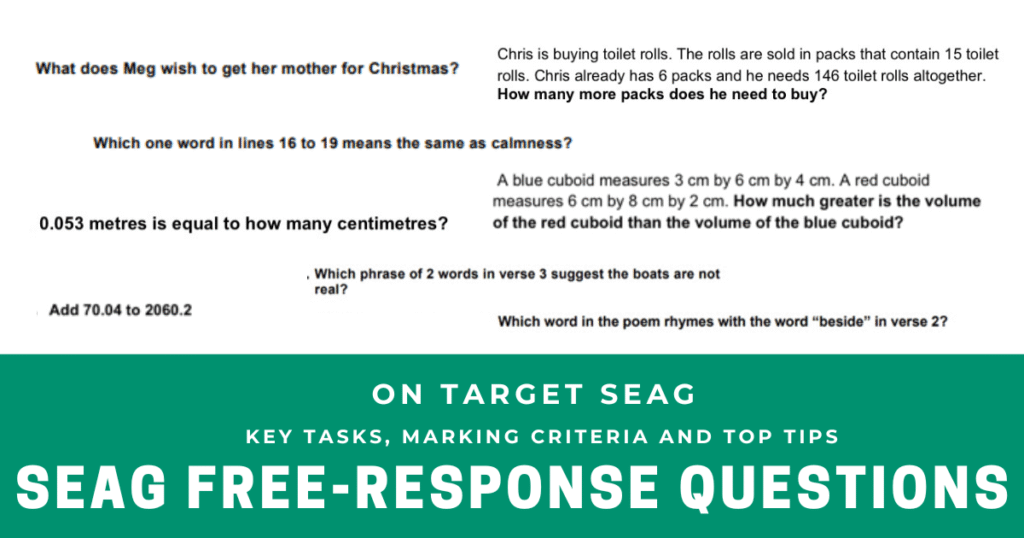SEAG Free-Response Questions
When preparing for the SEAG Entrance Assessment, understanding the format of SEAG Free-Response Questions is essential for achieving high scores. Unlike multiple-choice questions, these require pupils to write short, precise answers—testing their ability to think independently and apply knowledge from the Northern Ireland Key Stage 2 curriculum.

This guide explains the key types of Free-Response Questions, how they are marked, and effective strategies for success in both English and Mathematics.
What Are SEAG Free-Response Questions?
SEAG Free-Response Questions are short-answer tasks where pupils must:
- Write a correct word, phrase, number, or sentence,
- Demonstrate understanding without being given answer options.
Importantly, there is no extended writing requirement—answers are usually no more than a few words or a short sentence.
SEAG Free-Response Questions in English
English tasks are drawn from the Reading and Writing areas of the Northern Ireland Key Stage 2 Curriculum. Pupils will face questions that assess:
- Reading comprehension (literal and inferential),
- Vocabulary and word meaning in context,
- Identification of Nouns (concrete and abstract), adjectives, verbs and adverbs,
- Understanding of style, audience, and language effects.
Common English Free-Response Task Types
| Task Type | Example | What’s Assessed |
|---|---|---|
| Comprehension Questions | “Why did the character leave the house?” | Inference, evidence-based response |
| Word Meaning | “Which one word in lines 14 to 16 means the same as reduced?” | Vocabulary in context |
| Types of Speech | “Identify an adverb in line 5.” | Understanding of grammar |
| Understanding language | “Write an example of a simile in the first paragraph.” | Language effects |
SEAG Free-Response Questions in Mathematics
Maths questions focus on Key Stage 2 numeracy skills and problem-solving. The questions often involve:
- Ability to answer multi-step problems,
- Filling in missing numbers,
- Solving word-based arithmetic tasks.
Common Maths Free-Response Task Types
| Task Type | Example | What’s Assessed |
|---|---|---|
| Multi-step problems | “A book costs £4.50. It is put on sale and is reduced by 10%. What is the new price of the book?” | Percentages, fractions, subtraction, money |
| Missing numbers | “144 ÷ 3 = __ x 8” | Algebra, multiplication, division |
| Data Interpretation | “How many children chose apples from this chart?” | Graph reading |
How Are SEAG Free-Response Questions Marked?
Markers reward:
- Correct answers in Maths, working out will not be marked and should not be written on the answer sheet.
- Clear, concise, and accurate responses in English.
- Correct spelling, punctuation, and grammar where tested.
There are no marks for handwriting, but a neat layout helps examiners follow working steps.
Strategies for SEAG Free-Response Questions
English Strategies
- Use short, complete sentences.
- Reference the text directly in comprehension questions.
- Practise identifying nouns, verbs, adjectives and adverbs.
- Read widely to extend vocabulary.
Maths Strategies
- Use the rough paper to do your working out.
- Break word problems into smaller steps.
- Double-check answers by reversing operations.
Final Word: Focused Answers Win Marks
SEAG written answer questions test accuracy, clarity, and reasoning—not long essays. Preparing with targeted practice papers that mirror the SEAG format will build confidence and improve exam performance.
